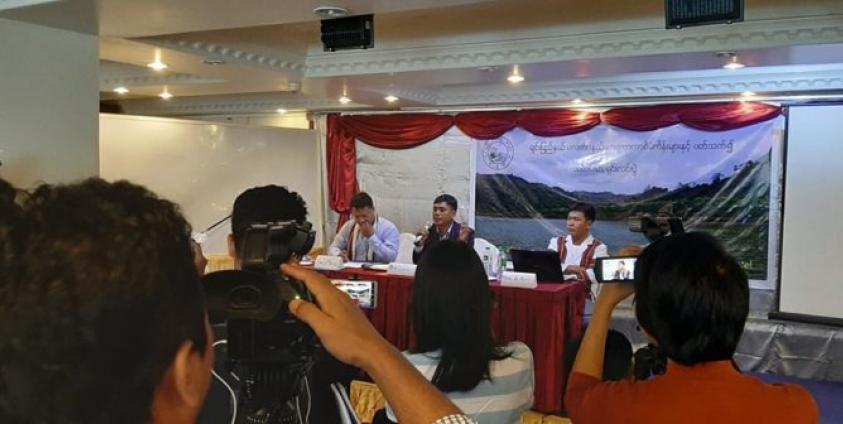If a mega dam is built on the Laymyo River—also known as the Lemro River—in southern Chin State’s Paletwa Township, some 20,000 people from more than 50 villages stand to be displaced, according to environmental advocates.
Chin Rivers Watch reported on the negative impacts of the proposed hydro-power project on Monday during a press conference in Yangon.
The organization said that the government has carried out a feasibility study concerning the construction of two dams on the Laymyo River—one in Chin State and one in Rakhine State.
The first project would be near Ko Phe She village in Paletwa, and is projected to produce 622 megawatts of electricity. The second project would be near Sai Din village in Mrauk-U Township and would potentially produce 105 megawatts of electricity.
“Over 20,000 people from 51 villages are likely to have to relocate from their villages. If they don’t relocate, these villages are going to be underwater,” Mang Za Hkop, the secretary of Chin Rivers Watch, told Khonumthung News. “If the government is going to implement these dam projects, local people will not be able to work on their farmland nearby the dam sites.”
Those living along the Laymyo River largely belong to the Chin sub-groups of Dai, Laitu, and Khumi, and ethnic Rakhine communities. There are around 60 villages on the waterway, home to 30,000 people.
Southern Chin State and northern Rakhine State have been the sites of intensifying armed conflict between the Burma Army and the Arakan Army in recent years. The area is considered a war zone, with thousands of people internally displaced by fighting.
“The government should not implement this kind of mega project before we can build a genuine federal Union. The government should not give permission for these mega projects [to proceed]. We ask that the government stop implementing these projects,” Mang Za Hkop said.
Chin State government spokesperson Soe Htet said that the current activities involve a ground survey, the data from which will be sent to the Union-level Ministry of Electricity, which will decide whether to move forward with the dams.
Burma’s previous military regime jointly began planning a hydro-power dam on the Laymyo River in 2009 with the Chinese government, but it was withdrawn by the government headed by Thein Sein in 2012.
When the current National League for Democracy administration took office in 2016, the company Tractebel—a Brussels-based subsidiary of French company Engie—began a feasibility study on the Laymyo dams.
The study received US$1 million in backing from the French government, but later the plans were reportedly withdrawn. Khonumthung News was told that the study has since been resumed by the same company.
The Laymyo River originates from the Bungtla waterfall in Chin State’s Matupi Township. It runs through Paletwa and continues into Mrauk-U and Myebon townships in Rakhine State and is integral to local livelihoods, crop cultivation, transport networks and ecosystems.







